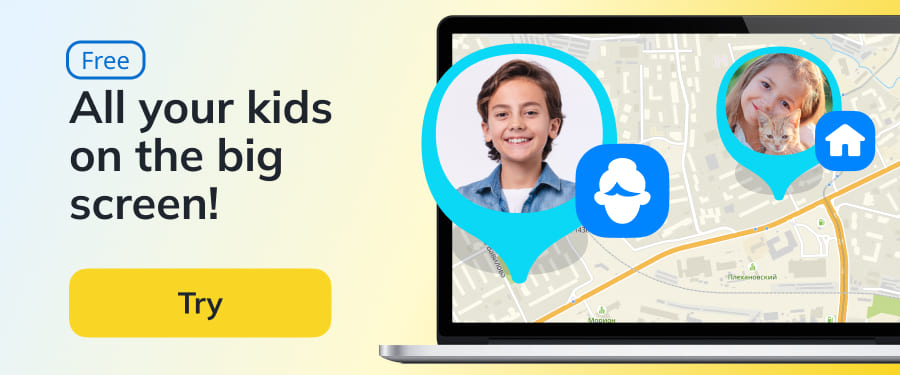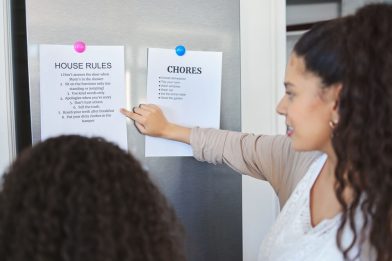How to Teach Good Manners to Kids Without Lectures or Eye Rolls
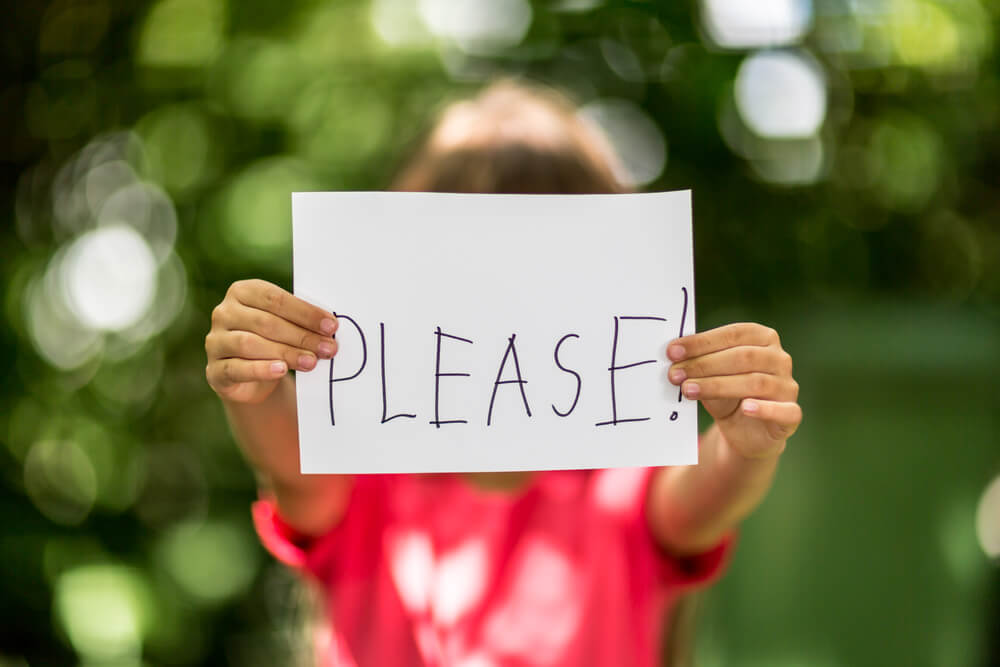
Teaching manners is a must for parents, no matter how old your children are or how you spend your days. They aren’t just cool party tricks to bust out at fancy dinner parties, but instead, are everyday skills that make life smoother for everyone.
The child who hands a classmate a pencil with a smile? Practicing kindness. The kiddo who knows how to say “thank you” without being nudged? That’s progress. And the teenager who actually looks up from their screen and says, “Hi, how was your day?” That’s next-level politeness right there.
Teaching good manners for kids is one of the greatest gifts you can give them. It’s more than just saying “please” or “thank you.” Manners shape how children interact with the world, helping them build meaningful relationships and grow into confident, considerate adults.
But what exactly are good manners, and why do they matter so much?
Contents:
- Defining the Basics of Good Manners
- Good Manners by Age Group
- Overcoming Parenting Challenges
- Consistency in the Digital Age
- Practical Strategies for Balancing Screen Use and Respect
- Fun Ways to Practice Manners Together
- When Kids Slip Up (and How to Respond)
- FAQs
Defining the Basics of Good Manners
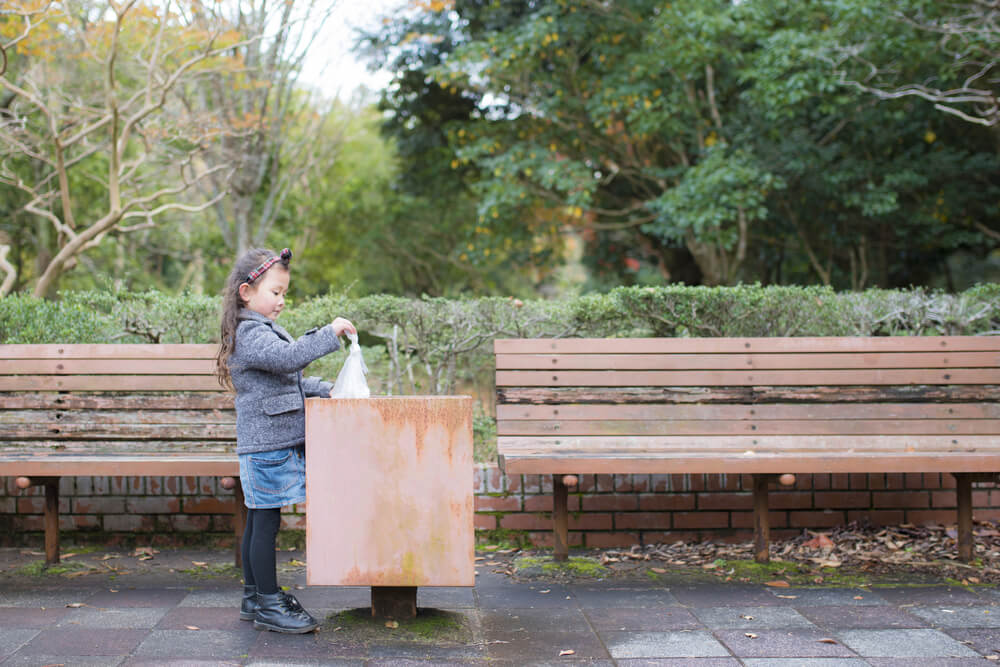
Hakase_420/Shutterstock
When we talk about “good manners,” we mean the simple, foundational behaviors that show respect and kindness toward others. These include:
- Greetings: Saying “hello,” “good morning,” or even just acknowledging someone with a smile.
- Polite phrases: Using “please,” “thank you,” “excuse me,” and “I’m sorry” appropriately.
- Taking turns: Waiting patiently for your turn to speak or act, whether in line at the park or during a conversation.
- Consideration for others: Being mindful of how actions and words affect people around you.
These practices might seem small, but they carry tremendous social weight. Think about that warm feeling when someone genuinely thanks you or when a stranger holds the door open. No matter who you are, manners set the tone for positive, courteous interactions.
What Are 10 Good Manners for Kids?
Good manners are the building blocks of respectful social behavior. When kids learn and practice them early, they not only create more harmonious interactions at home and school, but also develop the confidence to handle new social situations with ease. Here are ten essential manners every child should know:
1. Saying “Please” and “Thank You”
These small words go a long way. Teaching kids to ask nicely and show appreciation sets a foundation for respectful communication.
2. Saying “Excuse Me” and “I’m Sorry”
Whether they’re interrupting a conversation or bumping into someone by accident, kids should know how and when to use these phrases. Apologizing when they hurt someone—physically or emotionally—teaches empathy and accountability.
3. Taking Turns and Not Interrupting
Learning to wait patiently to speak or play encourages self-control and respect for others’ voices and space.
4. Practicing Good Table Manners
From chewing with their mouth closed to using utensils correctly, table manners help kids feel confident in social settings and show respect to those sharing a meal with them.
5. Being Punctual
Arriving on time for school, activities, or playdates is a valuable habit that teaches children responsibility and consideration for others’ time.
6. Sharing with Others
Whether it’s toys, snacks, or attention, learning to share helps children build trust and friendships.
7. Being a Good Listener
True listening means more than just staying quiet—it’s about paying attention, making eye contact, and showing interest in what others are saying.
8. Respecting Personal Space
Understanding physical boundaries—like not grabbing things from others or standing too close—fosters mutual comfort and respect.
9. Using Kind and Appropriate Language
Avoiding foul or hurtful words and speaking kindly—even when upset—teaches children the power of language and emotional control.
10. Cleaning Up After Themselves
Tidying up toys or their plate after meals shows responsibility and respect for shared spaces, whether at home, school, or a friend’s house.
Why Manners Matter
Good manners also play an essential role in a child’s development in the following ways:
- Stronger Relationships: Politeness makes interactions smoother, which helps kids connect with peers, teachers, and family members.
- Respect From Others: Children who display good manners naturally earn the respect of those around them. This can lead to more opportunities, better relationships, and even trust from authority figures.
- Boosted Confidence and Self-Esteem: Mastering social skills gives children a clear framework for how to act, lessening anxiety in social situations. Positive feedback from polite behavior reinforces their sense of self-worth.
According to developmental scientist and psychologist Andrea Hussong at the University of North Carolina at Chapel Hill, practicing good manners, and especially showing gratitude, can help kids tap into deeper connections with others. “Helping parents say, what do I do to help my kid be more aware and notice things? How do I help them be in touch with their thoughts and feelings about what they have? And the more that parents can do that, the more they can help kids find, what we call, the gift behind the gift…and the more you’re sort of in touch with that intention that someone else has for giving you, the more it feels good and personal. And it’s not about the sweater anymore. It’s about your connection.”
Good Manners by Age Group

Tomsickova Tatyana/Shutterstock
Teaching manners isn’t a one-size-fits-all process. Kids’ needs and abilities vary by age, so you need to introduce manners in ways they can understand and practice over time. Here’s how to approach polite behavior at every stage of childhood.
1. Toddlers (2–4 Years): Modeling and Repetition
At this tender age, your little one learns by watching you. Toddlers are like tiny sponges, soaking up behaviors and trying them out for themselves. Good manners begin with simple actions you can model and repeat consistently.
Some tips:
- Mimicry Matters: Toddlers love imitating what they see. Say “thank you” out loud when someone hands you something or offer a cheerful “good morning” when you enter a room. Over time, they’ll start echoing these phrases back.
- Repetition Is Key: Teaching “please” and “thank you” happens best when woven into daily routines. When your toddler asks for juice, say, “Can you say ‘juice, please?’” Then gently prompt them to repeat it.
- Celebrate Small Wins: Praise any effort toward politeness, like when they share a toy or say “sorry” after a mistake. “You’re so kind to share!” reinforces the behavior.
Be patient, too, because toddlers are still mastering language and impulse control. It will take time to notice real results, but consistency and encouragement ultimately lay the groundwork for a lifetime of good manners.
2. School-Age Kids (5–9 Years): Personal Space, Listening Skills, and Etiquette Basics
By the time kids hit school age, they’re juggling new social environments, from the classroom to playdates. This is the perfect time to expand their manners toolbox.
- Respect Personal Space: Teach your child about boundaries by using relatable examples like waiting for their turn on the playground slide or knocking on a door before entering a room.
- Active Listening: Help your child practice listening by encouraging eye contact and discouraging interruptions. A simple rule like “Wait until your friend finishes talking before you say your idea” works wonders.
- Table Manners 101: Dinner time is prime teaching time. Remind them to chew with their mouths closed, use utensils properly, ask permission to leave the table, and say, “May I have…?” rather than grabbing. Make it fun by having a “Manners Night” where everyone showcases their best behavior.
School-age kids love learning through games and role-playing. Try turning etiquette lessons into challenges, like who can set the table the fastest (and most politely) or taking turns playing host at an imaginary dinner party.
3. Tweens and Teens (10+): Digital Etiquette, Respect, and Social Awareness
As children grow into tweens and teens, social situations (and the way they communicate in those situations) become more complex. Their independence means they’ll need to understand etiquette for both in-person and digital interactions.
- Digital Dos and Don’ts: Teach the importance of thoughtful communication online. That includes avoiding inappropriate comments on social media, not texting during conversations, and respecting online privacy rules.
- The Art of Disagreeing Gracefully: Whether they’re debating with peers or negotiating with parents, tweens and teens must learn how to express disagreement respectfully and avoid teasing in their online interactions. Encourage them to use phrases like, “I see your point, but I feel…” or “Can we look at it another way?”
- Reading Social Cues: Social skills extend beyond words. Help teens understand nonverbal cues like body language and tone. Point out real-life examples when someone crosses their arms or avoids eye contact, explaining what these signals might mean.
While your teens may initially roll their eyes (teen trademark!), they’ll appreciate these skills when they lead to positive friendships and smoother interactions with teachers, coaches, and future employers.
Overcoming Parenting Challenges
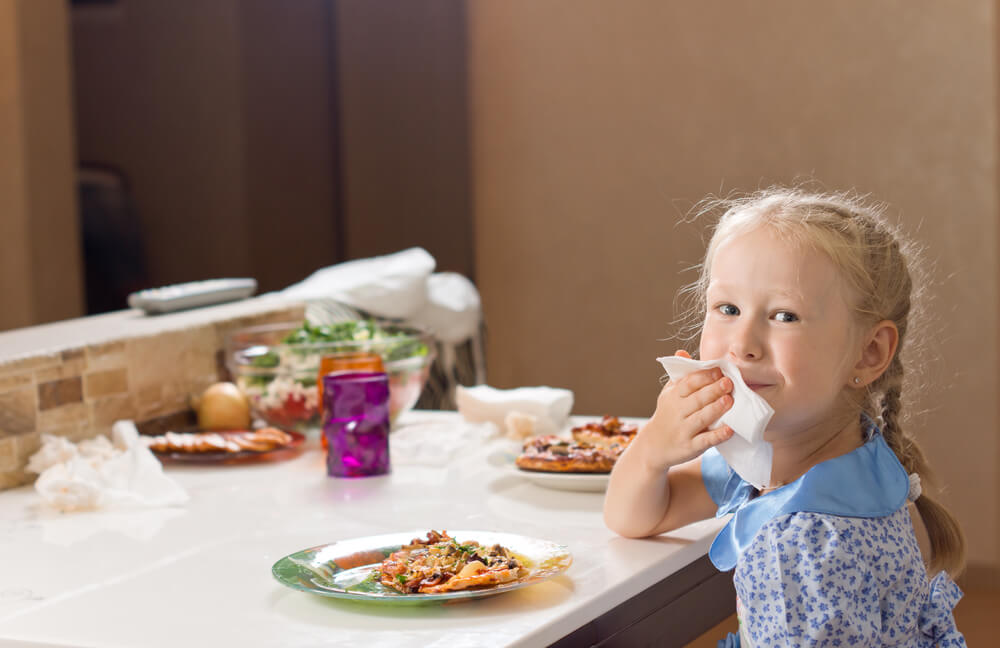
Viacheslav Nikolaenko/Shutterstock
Parenting isn’t a smooth ride, and no child is perfectly polite 100% of the time. Kids often test limits, and consistency is tricky whether you’re diffusing toddler tantrums, navigating sibling rivalries, or negotiating curfews. But all kids can learn manners with enough practice and patience.
One helpful approach is involving them in creating their own “politeness plan.” Ask questions like, “What could you say if a friend shares their candy with you?” and “How can we make sure everyone gets a turn during game night?” Giving kids some personal autonomy makes them more likely to follow through.
When it comes to consistency, especially in the digital age, tools like the Kids360 app can make a world of difference. The app helps parents establish routines, set screen limits, and create boundaries for tech use, a key part of teaching digital etiquette.
For example, you can schedule or request downtime during family meals to encourage face-to-face interaction or monitor appropriate use of apps and messaging. Structure doesn’t just create better digital habits but also nurtures well-rounded and polite kids.
Consistency in the Digital Age
Technology, for all its benefits and advantages, can be a total buzzkill for polite behavior. Ever tried talking to someone glued to their phone? It’s like competing with their favorite app, and spoiler alert, you lose. Technology has crept into every corner of family life, and while it’s great in so many ways, it also challenges traditional manners.
You’ve seen it happen. Dinner plates go cold while everyone scrolls, kids interrupt conversations to check notifications, or family time fades into the background because of YouTube or Roblox.
Sound familiar? The good news is, you can tackle this without banning screens altogether or cueing an epic meltdown.
Read also: What is Netiquette? A Guide to Teaching Online Etiquette to Your Kids.
Practical Strategies for Balancing Screen Use and Respect
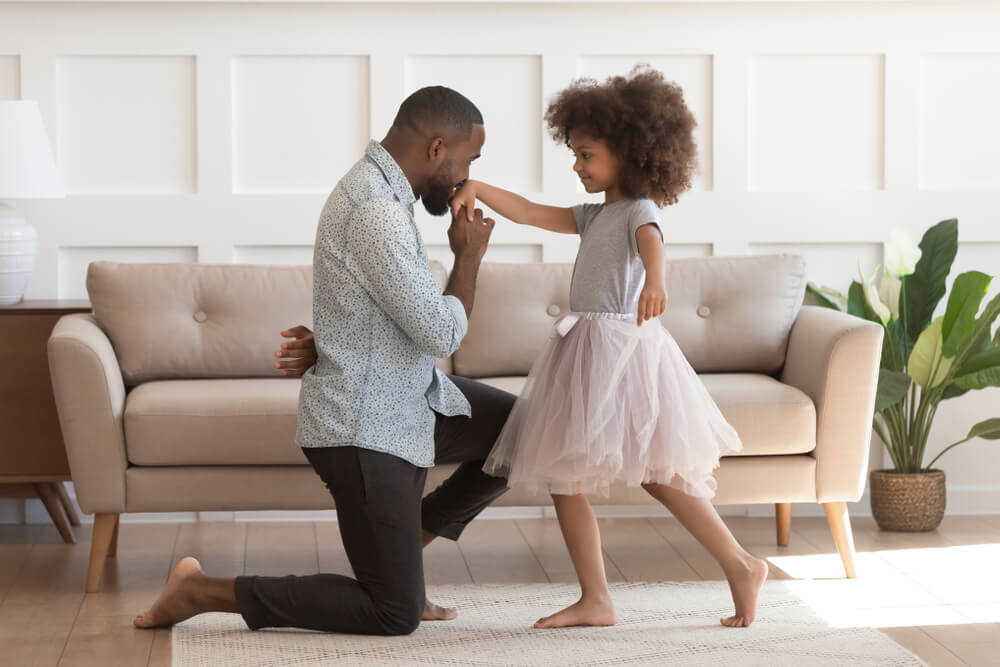
fizkes/Shutterstock
The goal here isn’t to demonize gadgets. Screens are part of life, but so is learning how to use them thoughtfully. Here are some step-by-step tips to help you teach your kids good manners in the digital age:
Device-Free Dinners
Establish a simple rule for mealtimes: no devices at the table. Create a tech-free zone where everyone actually talks. Need a little buy-in? Make it fun. Try a basket where everyone drops their gadgets before sitting down, or reward the family with a movie night for a full week of device-free dinners.
Eye Contact Over Screens
When your child is chatting, ask them to pause the game or put the phone down. Eye contact isn’t just a polite gesture. It also builds connections. If you make it a family priority, it’s going to stick.
Practice Digital Social Kindness
Saying “please” and “thank you” isn’t just an offline thing reserved for the occasional thank you card. Remind your kids that texting plz and thx may be fast, but real words (used kindly) pack way more punch. Encourage them to post compliments, avoid hurtful comments, and be mindful of how their messages land on others.
Natural App Integration
Technology itself can help reinforce good habits. For example, apps like Kids360 can track screen time, limit app usage, and encourage mindful tech behaviors. Why fight tech when you can use it as a teammate?
Fun Ways to Practice Manners Together
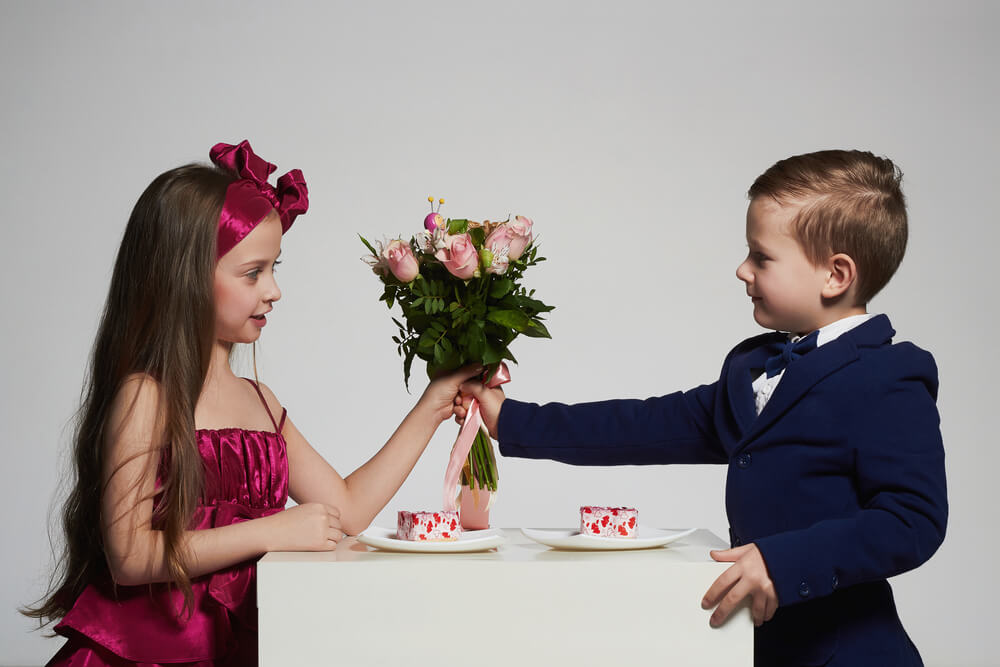
Eugene Partyzan/Shutterstock
Manners shouldn’t feel like a chore. They’re not broccoli you eat because it’s good for you. They can be fun. Here are a few playful ways to teach good manners that won’t have your kids zoning out in less than five minutes.
The “Fancy Dinner” Role Play
Host a make-believe fancy dinner where everyone dresses up, sets the table, and uses their best manners. Watch as your kids love the chance to practice dining etiquette and polite eating, napkin use, passing dishes while maintaining polite family conversations, and saying “excuse me” with dramatic flair. Bonus points if you dim the lights and play classical music in the background for extra ambiance.
Compliment Bingo
Create a bingo card with compliment categories like “You’re funny,” “I love how you…” and “Great job at…” Encourage family members to fill up their cards throughout the day or week by giving real, thoughtful compliments.
The Apology Game
We all mess up, and model-repairing kind of behavior is invaluable. Practice saying, “I’m sorry” the proper way: acknowledging what went wrong and asking how to fix it. Turn it into a lighthearted round where each person role-plays scenarios like accidentally knocking over someone’s project or forgetting to share popcorn at movie night.
Manners Adventure Stories
Use storytelling to blend creativity with teaching. Create a story where a character keeps running into quirky situations where good manners save the day. Engage the kids by asking, “What should they say here?”
The Positive Sticky Note Challenge
Keep a stack of sticky notes handy and challenge everyone in the house to leave one kind note for someone else each day. It’s a quiet (but powerful) way to practice thoughtfulness without feeling like it’s a lecture.
When Kids Slip Up (and How to Respond)

PeopleImages.com – Yuri A/Shutterstock
Kids are going to mess up. They’ll interrupt, forget “thank you,” or chew with their mouths open while you’re mid-sentence. It’s normal, and it’s not a sign that you’re failing as a parent. Manners aren’t learned in a day. They’re a process.
When those uh-oh moments happen, avoid harsh scoldings (even if you’re mid-headache and their loud burp pushed you over the edge). Instead, try these approaches to get things back on track.
Normalize Mistakes
Start with this mindset shift for yourself and your kids. Mistakes are learning opportunities. Instead of frustration, say something like, “It’s okay. We all forget sometimes. The important part is trying again.”
Reframe with Empathy
Sometimes, kids blurt things out or behave rudely because they’re too busy being excited to pause. A kind redirection can make a world of difference. For instance, “I can see you’re excited to talk about your drawing, but I was in the middle of telling you about my day. Can we take turns and try to avoid interruptions next time?”
No Shame, No Blame
Public embarrassment is the fastest way to shut down communication. If your child’s behavior makes you wince at a family gathering or in the checkout line, press pause. Handle it calmly and privately later. Choose a quiet moment to chat about why manners matter and how they can repair the situation.
Focus on Repairing Over Punishing
Instead of doling out consequences, approach missteps as chances to reflect and repair. “How do you think that made Aunt Lisa feel when you said that? What could you do to make things right?” This helps kids build empathy, which is the foundation of truly polite behavior.
Remember, the goal is progress, not perfection. You’re not trying to raise robots who spit out “please” and “thank you” automatically. You’re teaching empathy, respect, and care, which are qualities that take time and patience.
Related: How to Raise a Well-Behaved Child Without Suppressing their Personality?
Manners Matter More Than Ever
Good manners are less about creating kids who know which fork to use and more about raising humans who respect others. Every “please,” “thank you,” and moment of wait-your-turn builds a foundation of empathy and thoughtfulness.
Raising a polite child takes time, patience, and a healthy dose of persistence, but the rewards are well worth the effort.
Remember, kids learn best when we model appropriate behavior, set clear expectations, and celebrate their progress. With practical tools like the Kids360 app and a bit of creativity on your end, you’re setting your child on the path to becoming a kind, courteous, and confident individual.
Manners reflect how we value those around us, in person and online. They make relationships smoother, conversations kinder, and life just a little more pleasant. Doing the work to instill those habits? Now, that’s something to be proud of.
FAQs

fizkes/Shutterstock
What are “the 10 manners”?
Think of these as universal acts of kindness and respect, from polite words to actions that show consideration. They echo the same basics as above, covering everything from using a respectful tone to cleaning up after yourself to knowing how to do a proper handshake and maintain personal hygiene.
What are 10 good habits for kids?
Habits include manners but stretch further into routines, too, such as tidying up after themselves, saying hello and goodbye politely, washing hands before meals, brushing teeth twice daily, doing homework on time, helping out with small chores, being kind to pets and animals, speaking kindly to siblings and peers, limiting screen time responsibly, and expressing gratitude regularly.
What are good manners in 10 lines?
Good manners can be summarized in these key acts of kindness: polite greetings, saying “please” and “thank you,” listening without interruption, sharing happily, practicing good dining and table manners, offering help without being asked, respect for elders, apologizing sincerely, speaking politely (even when upset), and being mindful of others’ feelings.
Cover image: BIGANDT.COM/Shutterstock
Проверьте электронный ящик





